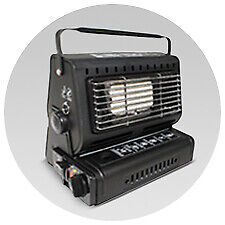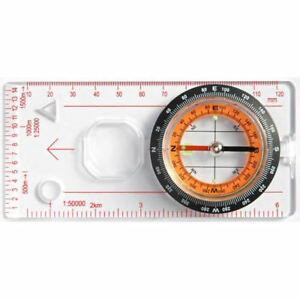Camping and Hiking Equipment
Equipment and gear enable people to safely enjoy all kinds of outdoor environments for extended periods of time. Requirements for camping and hiking gear range from merely needing to provide comfort to ensuring survival for outdoor enthusiasts of varying skill levels. Whether for camping or hiking, all equipment should hold up to rugged outdoor use.
What should be considered when buying camping and hiking gear?- Environment: Staying comfortable in your surroundings is the first step to having an enjoyable time. Consider terrain, vegetation, elevation, nearby water, and overall soil moisture.
- Wildlife: You have to consider the fact that you are sharing space with a lot of creatures that call your recreational site home. Various parasites and other bugs can make for a bad time. You will also want to prepare for larger animals that like to forage in your food stash or animals that want to share your heat like snakes.
- Weather: Temperature, sun exposure, and precipitation all need to be accounted for when planning a successful trip into the outdoors.
- Regulations: Know what the rules and laws are of where you will be hiking or camping so that you know what you need to bring and what should be left at home.
- Activities: Be sure to pack what you will need to enjoy your hike and/or camp to the fullest or achieve the goals you've set for your trip.
- Duration: The length of your camping or hiking trip will determine how much and what type of gear you will need.
- Shelter: Tents are good choices, but a tarp is another option if the conditions allow it. In the case of especially heavy precipitation, both a tent and tarp may be required.
- Bedding: The nocturnal temperature needs to be considered and the correct thickness and temperature rated sleeping bag should be used. There are sleeping bags that will keep campers warm in even sub-zero climates. In warmer conditions, portable hammocks may be used.
- Light and heat sources: A combination of lanterns and flashlights will suffice to provide light while you are hiking and at your campsite. Headlamps are worn with light beaming down from the forehead and are a good hands-free option. Lanterns are available with battery operated lights as well as oil-fed wicks. Large citronella candles and oil torches are sometimes used as well. The campfire, where allowed, provides heat and light. Propane stoves are also a reliable heat source, especially for cooking. Be sure to bring matches, lighters, and other flame-making implements keeping them protected from moisture.
- Food storage: Storing food properly is important in the outdoors. Coolers that are rated to preserve food for extended periods of time may be necessary. Food storage should seal securely in order to protect it from bugs as well as larger foraging animals that may be able to open containers. In some areas, it is advised to store food suspended from trees to keep animals from getting to it.
- First Aid: A basic kit with bandages, pain relievers, antiseptic, gauze, and medical type will suffice in most situations.

















































































